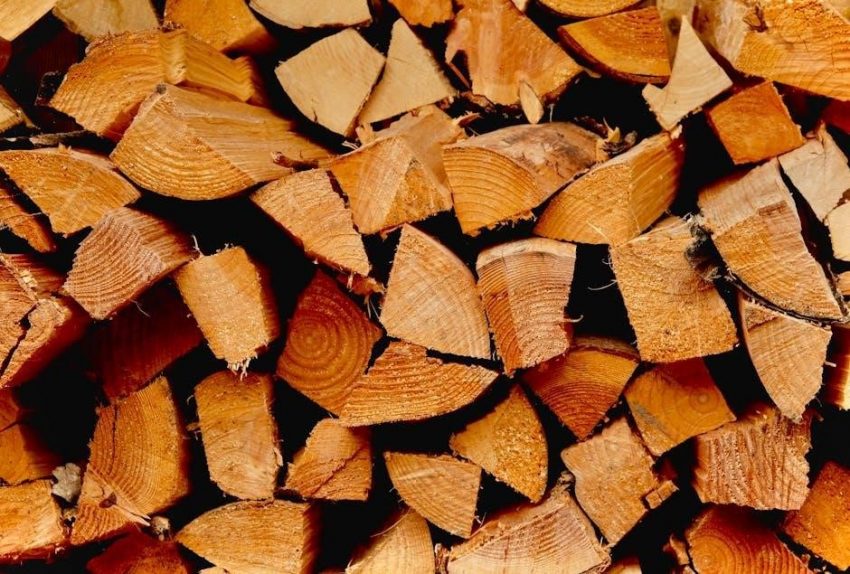What Are Split Rings?
Split rings are essential fishing accessories used to securely attach lures‚ hooks‚ or leaders. They consist of a metal ring with a small opening‚ allowing easy connection without damaging gear.
Split rings are small‚ circular metal rings with a narrow opening‚ designed to connect fishing lures‚ hooks‚ and leaders securely. Made from durable materials like stainless steel‚ they are a crucial component in fishing gear‚ offering a reliable way to attach lures without damaging the line or gear. Their split design allows for easy opening and closing‚ enabling anglers to quickly swap lures or hooks. Split rings are widely used in both freshwater and saltwater fishing‚ making them an essential item for any tackle box. Their versatility‚ strength‚ and ease of use make them indispensable for anglers of all skill levels‚ ensuring a secure connection that withstands the forces of fishing.
The Importance of Split Rings in Fishing
Split rings are a fundamental component in fishing‚ providing a secure and durable connection between lures‚ hooks‚ and leaders. Their design ensures that gear remains intact even under the stress of aggressive fish or harsh fishing conditions. By offering a reliable attachment point‚ split rings prevent gear loss and minimize the risk of line damage. They are particularly useful for attaching multiple components‚ such as hooks to lures‚ making them indispensable for both freshwater and saltwater fishing. Their versatility allows anglers to quickly change lures or hooks without compromising the integrity of their setup. Essentially‚ split rings enhance the efficiency and effectiveness of fishing gear‚ making them a must-have for anglers of all skill levels.

Understanding Split Ring Sizes
Split ring sizes vary to suit different fishing needs‚ with options in materials like stainless steel‚ ensuring durability for attaching lures or hooks securely.
Standard Size Chart for Split Rings
A standard size chart for split rings is essential for selecting the right fit for your fishing needs. The chart typically includes size numbers‚ outer diameters (O/D)‚ inner diameters (I/D)‚ and weight capacities. Common sizes range from 3 mm to 7 mm‚ with corresponding O/D measurements increasing proportionally. For example‚ a size 3 split ring might have an O/D of 4.2 mm and an I/D of 2.1 mm‚ suitable for lighter lures. Larger sizes‚ such as 6 or 7 mm‚ are designed for heavier applications and larger fish species. Weight capacities also vary‚ with smaller rings handling up to 14 kg and larger ones supporting over 27 kg. Always consult the manufacturer’s guide to ensure compatibility with your specific fishing gear and targets.
| Size | Outer Diameter (mm) | Inner Diameter (mm) | Weight Capacity (kg) |
|---|---|---|---|
| 3 | 4.2 | 2;1 | 14 |
| 4 | 4.8 | 2.4 | 18 |
| 5 | 5.4 | 2.7 | 22.6 |
| 6 | 6.0 | 3.0 | 27.2 |
Refer to the chart to match your split ring size with the appropriate fishing application.
How to Measure Split Ring Size
Measuring split ring size accurately ensures proper fit and performance. To measure‚ start by identifying the outer diameter (O/D)‚ inner diameter (I/D)‚ and wire thickness. Use a ruler or digital caliper for precise measurements. The O/D is the total diameter of the ring‚ while the I/D is the diameter of the opening. Wire thickness is crucial for determining durability. For example‚ a size 3 split ring typically has an O/D of 4.2 mm‚ an I/D of 2.1 mm‚ and a wire thickness of 0.8 mm. Always refer to the manufacturer’s size chart to confirm measurements. Accurate sizing is vital to prevent gear damage or loss during fishing. Ensure the split ring fits snugly on your lure or hook without causing abrasion or restricting movement.
Choosing the Right Size for Your Lure
Selecting the appropriate split ring size for your lure is crucial for optimal performance. Larger lures like crankbaits and jerkbaits require sturdy split rings to handle the stress of casting and fighting fish. For smaller lures‚ such as finesse baits‚ a lighter split ring is sufficient to prevent interference with the lure’s action. Match the split ring size to the lure’s weight and target species. For example‚ a size 5 split ring is ideal for larger lures weighing over 1/2 oz‚ while a size 2 is better suited for lighter applications. Always consider the wire thickness and material to ensure durability. Stainless steel split rings are recommended for saltwater and heavy-duty use. Refer to brand-specific size guides to ensure compatibility and maximize the effectiveness of your fishing setup. Proper sizing enhances both the performance and longevity of your gear.

Materials and Durability
Stainless steel split rings are highly durable and ideal for heavy-duty fishing‚ especially in saltwater. Other materials include coated steel and titanium‚ offering corrosion resistance and strength.
Stainless Steel vs. Other Materials
Stainless steel split rings are the most popular choice due to their exceptional durability and resistance to corrosion‚ making them ideal for saltwater and heavy-duty fishing. Other materials‚ such as titanium or coated steel‚ also offer excellent performance‚ with titanium being lightweight and corrosion-resistant‚ while coated steel provides added protection against rust. The choice between stainless steel and other materials depends on the fishing conditions and the type of gear being used. Stainless steel is preferred for its strength and reliability‚ while alternative materials may be better suited for specific applications or budgets. Both options ensure secure connections for lures and hooks‚ but stainless steel remains the gold standard for its unmatched durability and versatility in various fishing environments.
Weight Capacity and Test Ratings
Weight capacity and test ratings are critical factors when selecting split rings‚ ensuring they can handle the stress of fighting fish without failing. Split rings are rated by their maximum weight capacity‚ typically ranging from 14 kg for smaller sizes to over 27 kg for larger ones. These ratings are determined by the material’s strength and the ring’s construction. For example‚ stainless steel split rings often have higher test ratings due to their durability. It’s essential to match the ring’s capacity to the target species and fishing conditions to prevent breakage. Using a ring with an appropriate test rating ensures reliability and minimizes the risk of losing gear or fish during retrieval. Always check the manufacturer’s specifications to choose the right split ring for your needs.
Brand Recommendations
When choosing split rings‚ selecting a reputable brand ensures quality and reliability. Brands like VMC and Mustad are highly regarded for their durable and corrosion-resistant split rings‚ ideal for both freshwater and saltwater fishing. VMC offers premium materials that minimize abrasion‚ while Mustad’s round split rings are versatile and sturdy. Berkeley is another trusted name‚ providing a range of sizes and strengths to suit various fishing needs; These brands consistently deliver superior performance‚ making them top choices among anglers. Investing in well-known brands ensures that your split rings will withstand the rigors of fishing‚ providing a secure connection for your lures and hooks. Always consider brand reputation and product reviews when making your selection to ensure the best results on the water.

Technical Specifications
Technical specs for split rings include outer diameter (O/D)‚ inner diameter (I/D)‚ and wire thickness. These measurements ensure proper fit and strength for various fishing applications.
Outer Diameter (O/D)
The outer diameter (O/D) of a split ring refers to the total width of the ring‚ including the gap. It is a critical measurement for ensuring compatibility with lures and hooks. A larger O/D provides easier access for attaching or removing components but may compromise strength. For example‚ a 3 mm O/D is ideal for small lures and finesse fishing‚ while a 5.4 mm O/D is better suited for heavy-duty applications and larger fish species. When selecting split rings‚ anglers should match the O/D to the size of their lures and hooks to maintain balance and performance. Proper sizing ensures the ring stays securely closed‚ preventing accidental openings during casting or fighting fish. Always consult a size guide or manufacturer’s chart for precise recommendations based on your fishing needs.
Inner Diameter (I/D)
The inner diameter (I/D) of a split ring measures the space inside the ring‚ excluding the gap. It determines how easily lures or hooks can be attached. A larger I/D allows for smoother movement and reduces wear on connected components. For instance‚ a 3.3 mm I/D is suitable for medium-sized lures‚ while a 4.8 mm I/D is ideal for heavier applications. The I/D must align with the size of the hooks or loops it connects to ensure a secure fit. Proper sizing prevents excessive stress on the ring‚ which could lead to failure. Anglers should refer to size charts or manufacturer guidelines to select the appropriate I/D for their specific fishing setup‚ ensuring durability and reliability during use. Balancing I/D with wire thickness is key for optimal performance in various fishing conditions.
Wire Diameter and Thickness
Wire diameter and thickness are critical factors in determining the strength and durability of split rings. Thicker wires provide greater resistance to deformation and breaking‚ making them ideal for heavy-duty fishing applications. For example‚ a split ring with a 4.2 mm wire diameter can support up to 22.6 kg‚ while a 3 mm wire diameter handles lighter loads of around 14 kg. The thickness also influences the ring’s flexibility and ease of use‚ with thinner wires being easier to open and close. Anglers should match the wire thickness to their fishing style and the weight of their lures or hooks. Heavier lures and larger fish require thicker‚ more robust split rings to ensure reliability. Proper wire diameter ensures the ring remains secure and withstands the stresses of fishing‚ preventing unexpected failures during critical moments.

How to Use Split Rings
Split rings are versatile tools for securing fishing gear. They attach lures to leaders or hooks to baits‚ ensuring a reliable connection during casting and retrieval.
Attaching Lures and Hooks
Attaching lures and hooks with split rings ensures a secure and durable connection. To attach a lure‚ thread the split ring through the eye of the lure and close it firmly. For hooks‚ pass the ring through the hook’s eye and ensure it is snug. This method prevents the hook or lure from coming loose during use. Properly attaching gear is crucial for successful fishing‚ as it reduces the risk of losing tackle and ensures a reliable presentation. Always use the appropriate size and material of split rings to match the weight and type of your fishing gear for optimal performance. This step is essential for both fresh and saltwater fishing applications. By following these steps‚ anglers can ensure their gear remains securely attached‚ enhancing their overall fishing experience. Proper attachment also helps in maintaining the integrity of the gear‚ reducing wear and tear over time. Therefore‚ understanding how to correctly attach lures and hooks with split rings is a fundamental skill for any angler aiming to achieve consistent results. Always inspect the split rings before use to ensure they are in good condition‚ free from rust or damage‚ which could compromise their strength and reliability. Regular maintenance‚ such as cleaning and replacing worn-out rings‚ is also recommended to uphold performance standards. In summary‚ attaching lures and hooks with split rings is a straightforward yet critical process that requires attention to detail and the right materials to ensure effectiveness and longevity.
Opening and Closing Split Rings
To open a split ring‚ hold it firmly and twist one side toward you while moving the other side away. This motion creates an opening without distorting the ring’s shape. To close it‚ reverse the process by bringing the ends back together until they meet securely. Avoid using force that could bend or damage the ring‚ as this may weaken its integrity. Properly opening and closing split rings is crucial for attaching lures and hooks without causing wear or compromising the connection. Using the right technique ensures the ring remains functional and reliable. Regular inspection for signs of wear or rust is also recommended to maintain performance. By mastering this simple yet essential skill‚ anglers can ensure their gear stays securely attached‚ minimizing the risk of losing lures or hooks during fishing. Proper care and handling of split rings contribute to their longevity and effectiveness in various fishing applications. Always choose high-quality materials to ensure durability and reliability. This attention to detail enhances the overall fishing experience and helps anglers achieve better results. Correctly opening and closing split rings is a fundamental technique that every angler should practice to maintain their gear’s integrity and performance.
Best Practices for Securing Your Gear
To ensure your fishing gear stays securely attached‚ always use split rings that match the size and weight capacity of your lures or hooks. Properly opening and closing split rings without forcing them is key to preventing damage. Avoid over-tightening‚ as this can cause unnecessary stress on the ring. Regularly inspect split rings for signs of wear‚ rust‚ or deformation‚ and replace them if necessary. Using high-quality‚ durable materials like stainless steel is recommended‚ especially for heavy-duty applications. When attaching lures or hooks‚ make sure they fit snugly within the ring to prevent shifting during use. Additionally‚ consider the type of fishing you’re doing and the target species when selecting split rings. Following these best practices ensures your gear remains secure‚ reducing the risk of losing lures or hooks during fishing. Proper maintenance and careful handling of split rings can significantly extend their lifespan and reliability‚ making your fishing experiences more successful and enjoyable. By adhering to these guidelines‚ anglers can optimize their gear’s performance and focus on catching more fish. Regular checks and timely replacements are essential for maintaining the integrity of your fishing setup. Always prioritize quality and appropriate sizing to ensure your split rings perform as expected. This attention to detail not only enhances your fishing experience but also helps in preserving your gear for future use. Securing your gear properly is a simple yet crucial step that can make a significant difference in the outcome of your fishing trips. By following these best practices‚ anglers can enjoy a more efficient and productive fishing experience. The right techniques and materials ensure that split rings function reliably‚ providing a secure connection between your line and lure. Properly securing your gear is fundamental to successful fishing‚ and using the best practices outlined here helps achieve that goal effectively. With the right approach‚ anglers can minimize gear loss and maximize their chances of reeling in a great catch. Always remember that the small details‚ like the condition of your split rings‚ can have a big impact on your fishing success. By staying vigilant and proactive in maintaining your gear‚ you can enjoy a more rewarding and stress-free fishing experience. Best practices for securing your gear are not just about convenience; they are about ensuring the longevity and effectiveness of your fishing equipment. Taking the time to properly secure your gear can save you from the frustration of lost lures and missed opportunities. Always make it a habit to check and maintain your split rings before each fishing trip to ensure everything is in optimal condition. This simple routine can make a world of difference in your overall fishing performance and satisfaction. By prioritizing the security of your gear‚ you can focus more on the thrill of the catch and less on potential equipment failures. Following these best practices is a proactive approach to improving your fishing results and extending the life of your gear. The key to a successful fishing experience lies in the details‚ and securing your gear with proper split rings is one of those essential details that should never be overlooked. By adopting these best practices‚ anglers can enhance their fishing techniques and enjoy better outcomes on the water. The combination of quality materials‚ proper sizing‚ and careful handling ensures that split rings perform at their best‚ providing a reliable connection that withstands the demands of fishing. Always remember that the security of your gear is a critical factor in your fishing success‚ and taking the time to follow these best practices can make all the difference. With the right techniques and materials‚ anglers can trust their gear to perform when it matters most‚ leading to more successful and enjoyable fishing trips. Properly securing your gear is an investment in your fishing success‚ and by following these guidelines‚ you can ensure that your split rings are always up to the task. The attention you give to securing your gear today can lead to more triumphs on the water tomorrow. By making these best practices a part of your routine‚ you can elevate your fishing game and enjoy the rewards of a well-maintained setup. Always keep in mind that the smallest components‚ like split rings‚ play a vital role in the overall performance of your fishing gear. By taking care of these details‚ you can ensure that every component works together seamlessly to help you land the perfect catch. The art of fishing is not just about skill and strategy; it’s also about the proper preparation and maintenance of your gear. By securing your gear with the best practices outlined here‚ you can focus on what really matters – enjoying the thrill of fishing and reeling in those prized catches. The right approach to securing your gear is just as important as the right fishing techniques‚ and together‚ they contribute to a more rewarding fishing experience. Always take the time to properly secure your gear‚ and you’ll be well on your way to a successful and enjoyable fishing adventure. The security of your gear is the foundation upon which your fishing success is built‚ and by following these best practices‚ you can ensure that foundation is strong and reliable. With secure gear‚ you can tackle any fishing challenge with confidence‚ knowing that your equipment is ready to perform. Properly securing your gear is a fundamental aspect of fishing that should never be overlooked‚ and by adhering to these guidelines‚ you can maximize your chances of a successful outing. The effort you put into securing your gear today will pay off tomorrow when you’re out on the water‚ trying to land that big catch. By making these practices a part of your fishing routine‚ you can enjoy a more efficient and productive fishing experience. The key to a successful fishing trip often lies in the smallest details‚ and securing your gear with the best practices is one of those details that can make a significant difference. Always remember that the security of your gear is a critical factor in your fishing success‚ and taking the time to follow these best practices can lead to more triumphs on the water. By prioritizing the security of your gear‚ you can focus more on the excitement of fishing and less on potential equipment issues. Properly securing your gear is not just about convenience; it’s about ensuring that every component of your fishing setup is functioning at its best. By taking the time to follow these best practices‚ you can enjoy a more rewarding and stress-free fishing experience. The security of your gear is an essential part of your fishing strategy‚ and by adhering to these guidelines‚ you can enhance your overall fishing performance. With the right techniques and materials‚ you can trust your gear to hold up under any fishing conditions‚ giving you the confidence to tackle any challenge; Always remember that the small details‚ like properly securing your gear‚ can have a big impact on your fishing success. By staying vigilant and proactive in maintaining your gear‚ you can enjoy a more enjoyable and productive fishing experience. Properly securing your gear is a simple yet crucial step that can make a significant difference in the outcome of your fishing trips. By following these best practices‚ anglers can minimize gear loss and maximize their chances of reeling in a great catch. Always make it a habit to check and maintain your split rings before each fishing trip to ensure everything is in optimal condition. This simple routine can make a world of difference in your overall fishing performance and satisfaction. By prioritizing the security of your gear‚ you can focus more on the thrill of the catch and less on potential equipment failures. Following these best practices is a proactive approach to improving your fishing results and extending the life of your gear. The key to a successful fishing experience lies in the details‚ and securing your gear with proper split rings is one of those essential details that should never be overlooked. By adopting these best practices‚ anglers can enhance their fishing techniques and enjoy better outcomes on the water. The combination of quality materials‚ proper sizing‚ and careful handling ensures that split rings perform at their best‚ providing a reliable connection that withstands the demands of fishing. Always remember that the security of your gear is a critical factor in your fishing success‚ and taking the time to follow these best practices can make all the difference. With the right techniques and materials‚ anglers can trust their gear to perform when it matters most‚ leading to more successful and enjoyable fishing trips. Properly securing your gear is an investment in your fishing success‚ and by following these guidelines‚ you can ensure that your split rings are always up to the task. The attention you give to securing your gear today can lead to more triumphs on the water tomorrow. By making these best practices a part of your routine‚ you can elevate your fishing game and enjoy the rewards of a well-maintained setup. Always keep in mind that the smallest components‚ like split rings‚ play a vital role in the overall performance of your fishing gear. By taking care of these details‚ you can ensure that every component works together seamlessly to help you land the perfect catch. The art of fishing is not just about skill and strategy; it’s also about the proper preparation and maintenance of your gear. By securing your gear with the best practices outlined here‚ you can focus on what really matters – enjoying the thrill of fishing and reeling in those prized catches. The right approach to securing your gear is just as important as the right fishing techniques‚ and together‚ they contribute to a more rewarding fishing experience. Always take the time to properly secure your gear‚ and you’ll be well on your way to a successful and enjoyable fishing adventure. The security of your gear is the foundation upon which your fishing success is built‚ and by following these best practices‚ you can ensure that foundation is strong and reliable. With secure gear‚ you can tackle any fishing challenge with confidence‚ knowing that your equipment is ready to perform. Properly securing your gear is a fundamental aspect of fishing that should never be overlooked‚ and by adhering to these guidelines‚ you can maximize your chances of a successful outing. The effort you put into securing your gear today will pay off tomorrow when you’re out on the water‚ trying to land that big catch. By making these practices a part of your fishing routine‚ you can enjoy a more efficient and productive fishing experience. The key to a successful fishing trip often lies in the smallest details‚ and securing your gear with the best practices is one of those details that can

Selecting the Right Split Ring
Choose split rings based on fishing type‚ lure size‚ and target species. Stainless steel is ideal for durability‚ especially in saltwater. Match ring size to lure weight and fish strength for optimal performance.
Factors to Consider: Fishing Type and Lure Size
When selecting split rings‚ consider the type of fishing and the size of your lure. Saltwater fishing requires durable‚ corrosion-resistant materials like stainless steel‚ while freshwater fishing may allow for lighter options. Lure size is critical‚ as smaller rings suit lightweight lures for finesse fishing‚ while larger rings are needed for heavy baits like crankbaits or jerkbaits. The weight capacity of the split ring should match the lure’s size to prevent failure during use. For example‚ a 1/2-3/4 oz lipless crankbait may require a specific ring size to ensure reliability. Always match the ring’s strength rating to the target fish species and fishing conditions to maximize performance and minimize gear loss.
Matching Split Rings to Target Fish Species
Choosing the right split ring size depends on the target fish species. Larger fish like musky or pike require heavy-duty split rings with higher weight capacities to handle strong fights. Smaller species‚ such as trout or panfish‚ can be effectively managed with lighter‚ smaller rings. Saltwater species like bass or walleye may need corrosion-resistant materials. The ring’s durability and strength must match the fish’s size and fighting power. For instance‚ a 5XD crankbait used for larger bass requires a sturdy split ring to ensure reliability. Always consider the fish’s strength and the lure’s weight when selecting the appropriate split ring size to ensure a secure connection and prevent gear loss during fishing. This ensures optimal performance and increases the chances of a successful catch. Properly matching split rings to target species enhances fishing efficiency and gear longevity.
Brand-Specific Size Guides
Various manufacturers provide detailed size guides for their split rings‚ ensuring anglers can make informed decisions. Brands like VMC and Mustad offer charts linking ring sizes to specific fishing applications. For example‚ VMC’s size guide recommends particular ring diameters for lures like crankbaits or jerkbaits‚ while Mustad’s Round Split Rings are categorized by weight capacity and application type. Berkeley’s technical specifications include outer and inner diameters‚ wire thickness‚ and test ratings‚ helping anglers match rings to their fishing needs. These brand-specific guides are invaluable resources‚ offering precise measurements and application recommendations. By consulting these guides‚ anglers can optimize their gear selection‚ ensuring reliability and performance. This tailored approach enhances fishing efficiency and helps anglers achieve better results‚ making brand-specific size guides essential tools for any serious angler. Always refer to these resources when choosing split rings for your fishing setup.

Maintenance and Care
Regularly clean split rings to prevent corrosion and ensure smooth operation. Inspect for wear and tear‚ replacing any damaged rings to maintain gear integrity and performance.
Cleaning and Inspection Tips
Regular cleaning and inspection of split rings are crucial for maintaining their performance and longevity. After use‚ rinse split rings in fresh water to remove dirt‚ grime‚ and salt residues. For tougher grime‚ soak them in mild soap and warm water‚ then scrub gently with a soft-bristle brush. Avoid harsh chemicals or abrasive materials that could scratch or weaken the metal. After cleaning‚ dry thoroughly with a soft cloth to prevent rust or corrosion‚ especially for non-stainless steel rings. Inspect each ring for signs of wear‚ corrosion‚ or misalignment. Check the gap for proper alignment and ensure it opens and closes smoothly. Replace any rings showing significant damage or rust to maintain reliability and prevent gear failure during fishing trips. Regular maintenance ensures your split rings remain durable and functional for years.

and Resources
Replacing Worn-Out Split Rings
Replacing worn-out split rings is vital to ensure fishing gear reliability. Over time‚ split rings can corrode‚ bend‚ or develop gaps that compromise their effectiveness; Look for signs like rust‚ misalignment‚ or difficulty opening and closing. When replacing‚ match the original size and material to maintain proper functionality. Stainless steel rings are ideal for durability‚ especially in saltwater conditions. Use a size chart to select the correct ring for your lure or hook setup. Always carry spare split rings in your tackle box for quick replacements on the water. Removing old rings carefully with pliers or split ring pliers prevents damaging adjacent components. Install new rings by gently opening them and securing them to the desired attachment point. Regular replacement ensures your gear remains in optimal condition‚ reducing the risk of losing lures or fish due to equipment failure. This simple maintenance step can significantly improve your fishing experience and success.
